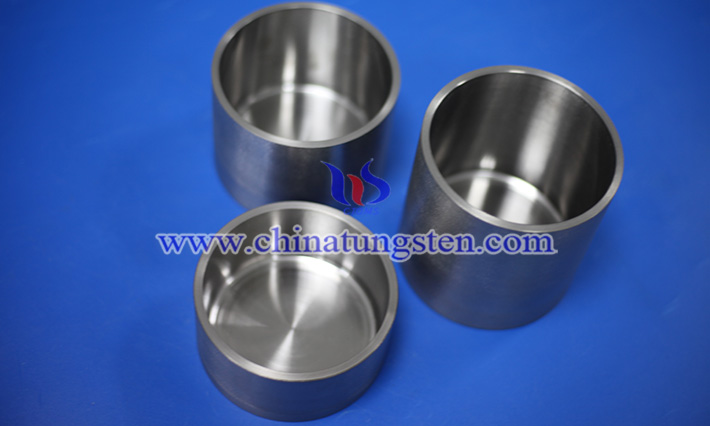Tungsten Crucibles Are Used in the Nuclear Industry
- Details
- Category: Tungsten Information
- Published on Monday, 09 June 2025 15:07
With the continuous development of nuclear energy technology, the requirements for thermal stability, corrosion resistance and structural integrity of materials under extreme conditions are increasing, and tungsten crucibles have become one of the important containers for the processing and research of highly radioactive materials, molten nuclear fuel, high-temperature structural materials and radioactive waste due to their excellent physical and chemical properties.

First of all, tungsten is characterized by its extremely high melting point of 3410°C, which is one of the highest of any metal. This characteristic allows the crucible made of tungsten to operate stably for a long time in a high-temperature irradiated environment. For example, in nuclear fuel reprocessing or high-temperature molten salt experiments, the experimental temperature often exceeds 2000 °C, which is difficult for ordinary ceramic or alloy materials to bear, but the W crucible can be operated at high temperature without deformation and melting, providing reliable material support for experiments and production.
Secondly, tungsten has good resistance to radiation. In nuclear reactors or nuclear material handling environments, materials are often exposed to high-intensity neutron and γ radiation exposure. Tungsten has a high atomic number and high atomic density, and has good absorption and attenuation ability for high-energy particles, so it can effectively reduce the influence of radiation on the outside world. At the same time, tungsten material has excellent structural stability under long-term irradiation and is not prone to lattice distortion or embrittlement, so it performs well as a crucible, target support or shielding component in nuclear energy devices.

Crucibles also have important uses when dealing with highly radioactive metals or molten nuclear fuels. In high-temperature melting furnaces, tungsten crucibles can be used to smelt metals such as thorium, uranium, plutonium or their alloys. These materials are usually characterized by strong radioactivity, high chemical activity, and high melting point, which puts forward extremely high corrosion resistance and purity requirements for containers. Tungsten has less chemical reaction with these metals at high temperatures, which can effectively avoid cross-contamination and inter-material reactions, and ensure the composition stability of nuclear materials.
In addition, W crucibles are also promising in high-temperature vitrification for nuclear waste treatment. This technology involves mixing radioactive waste into a glass matrix to melt at high temperatures, and then cooling and solidifying it into a stable body, which is convenient for long-term storage and transportation. It can withstand high temperatures and chemical attack from glass melt, making it one of the ideal processing vessels.
It is worth noting that although tungsten crucible has superior performance, it is also necessary to pay attention to the problem that it is easy to be oxidized in an oxidizing atmosphere. In some high-temperature experiments in the nuclear industry, it is necessary to cooperate with vacuum or inert gas (such as argon) protection to avoid the formation of tungsten oxide (WO₃) and affect the experimental process or vessel life. At the same time, because tungsten materials are expensive and difficult to process, it is necessary to weigh their service life, recycling efficiency and overall economy in practical applications.
- Chinatungsten Online: www.chinatungsten.com
- CTIA GROUP LTD: en.ctia.group
- Tungsten News & Price: www.ctia.com.cn
- Molybdenum News & Price: news.molybdenum.com.cn
- Tel.: 86 592 5129696; Email: sales@chinatungsten.com



 sales@chinatungsten.com
sales@chinatungsten.com